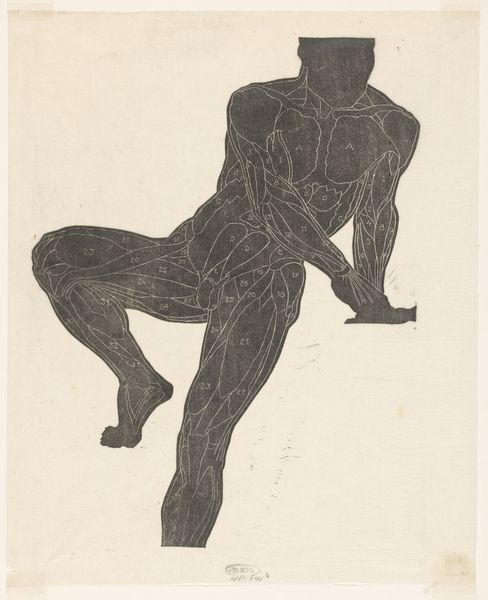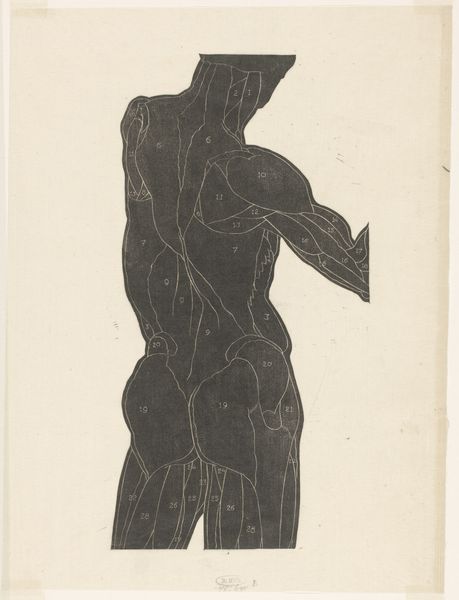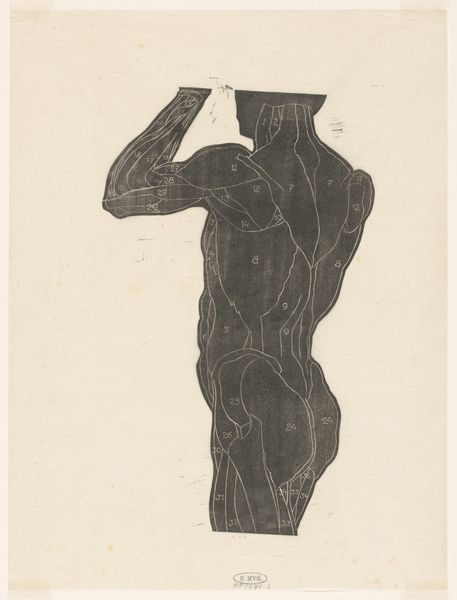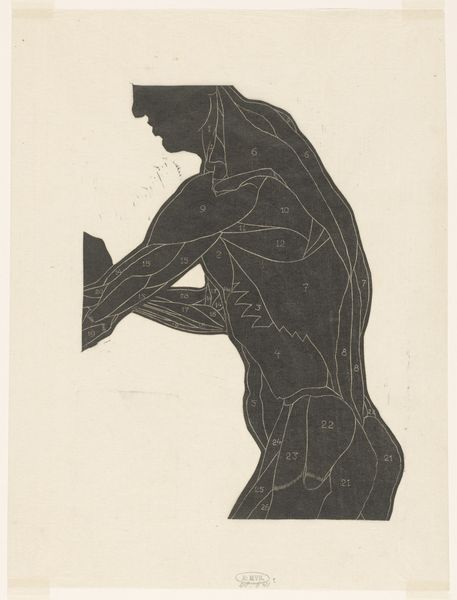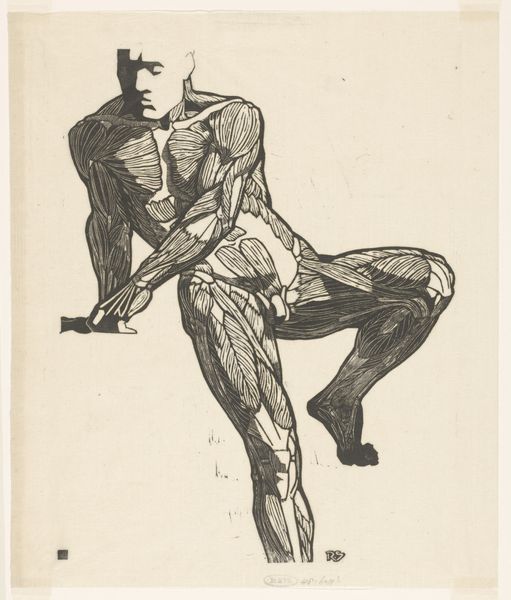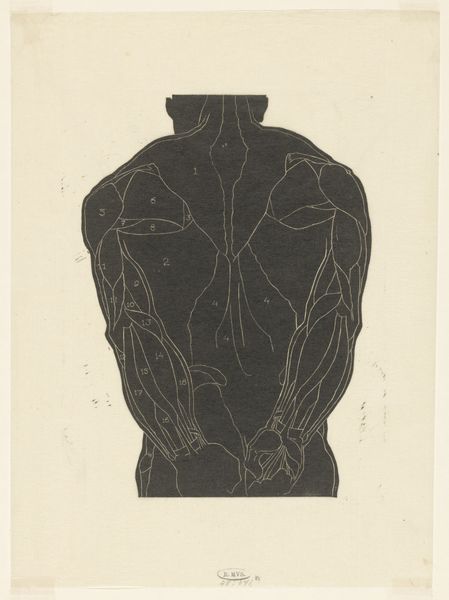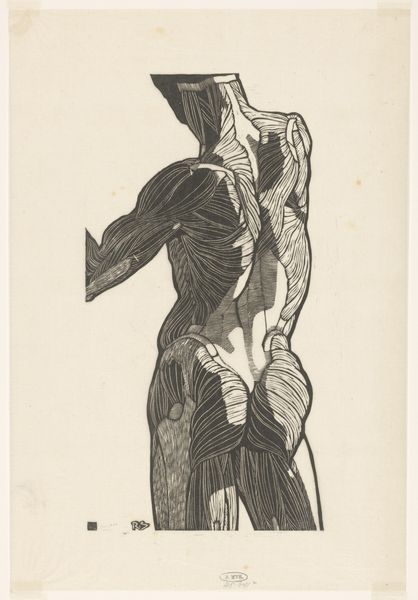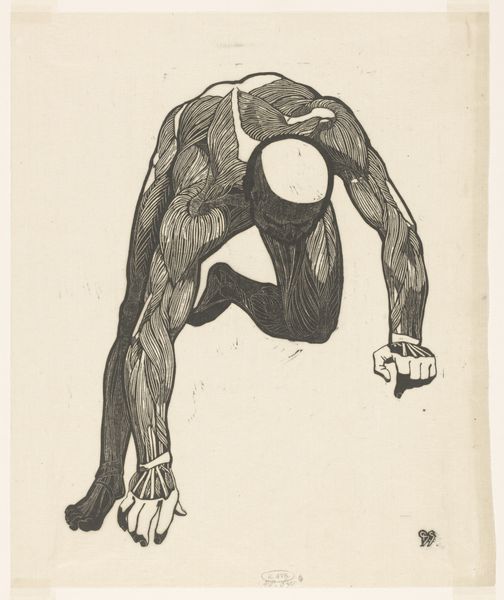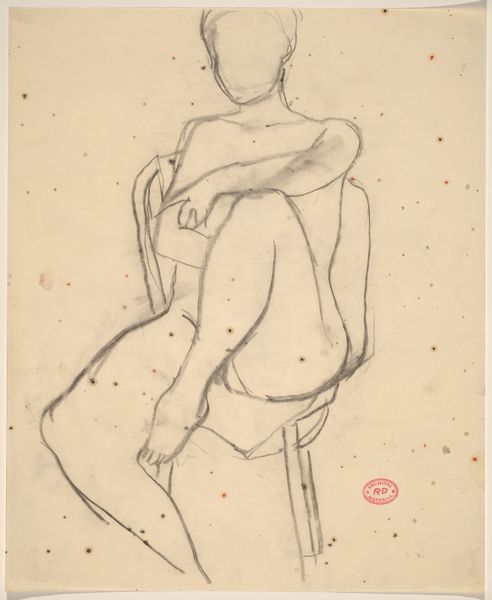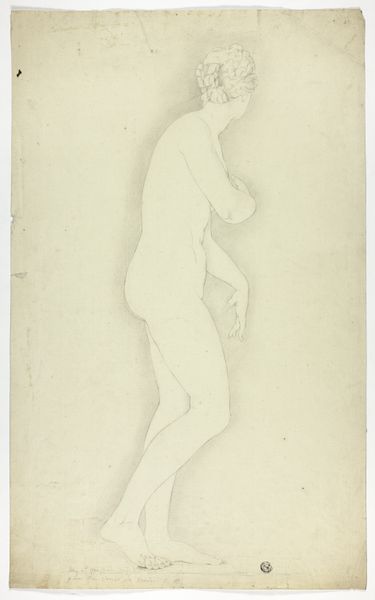
Anatomische studie van de been- en armspieren van een man in silhouet 1906 - 1945
0:00
0:00
drawing, paper, ink
#
portrait
#
drawing
#
light pencil work
#
shading to add clarity
#
pencil sketch
#
old engraving style
#
figuration
#
paper
#
personal sketchbook
#
ink
#
ink drawing experimentation
#
pen-ink sketch
#
sketchbook drawing
#
pencil work
#
academic-art
#
sketchbook art
Dimensions: height 312 mm, width 250 mm
Copyright: Rijks Museum: Open Domain
Curator: Our next artwork is titled "Anatomische studie van de been- en armspieren van een man in silhouet," which translates to "Anatomical study of the leg and arm muscles of a man in silhouette." It's currently held here at the Rijksmuseum and its creation is dated somewhere between 1906 and 1945. Editor: Well, it’s immediately striking how stark the contrast is, that powerful black silhouette against the white paper. It really draws your eye to the almost map-like quality of the muscles, each one neatly labeled. Curator: Absolutely. These anatomical drawings became increasingly common from the late 19th century into the early 20th century, finding practical usage as both scientific studies, but also objects of popular fascination as more people became literate. The figure becomes more exposed as our societies learned to read the body itself as a political text. Editor: It’s interesting you mention politics because I do see this as quite detached. Look at how the artist employs simple line and form; the abstraction really highlights the structure, creating a feeling of objective scientific study. You lose any sense of individuality. It's almost clinical in a strange sense. Curator: Yet that clinical element can be read as reflective of broader attitudes. These studies weren't solely about science. It reveals evolving social and political engagements with scientific authority. It reveals the body stripped of all subjectivity beyond our mutual humanity, exposing its most primal vulnerability. Editor: And in that vein, perhaps there is an echo of that tension in its formal rendering. The figure’s pose, seated with head bowed, adds a touch of introspection. Almost as though pondering existence at its very core. I am not fully certain about the intentions of its author though. Curator: Precisely! This study serves both the scientific community and prompts broader introspection about existence and scientific discovery. The formal, technical rendering interacts to spark conversations beyond mere instruction. Editor: Well, whichever was the artist’s intention, it’s undeniably a compelling composition that highlights both our external and internal landscapes. Curator: Indeed. This anatomical drawing at the Rijksmuseum stands as a visual crossroads where the precision of scientific study intersects with art’s potential to instigate questions concerning the human condition.
Comments
No comments
Be the first to comment and join the conversation on the ultimate creative platform.
